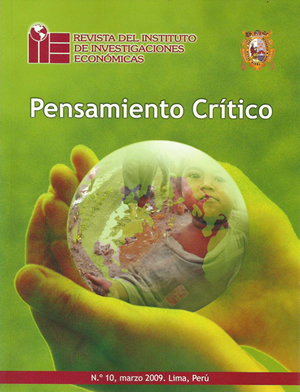Estructuraciones para analizar realidades complejas
DOI:
https://doi.org/10.15381/pc.v10i0.9132Keywords:
EstructuccionesAbstract
Knowledge of conceptual architectures makes us look critically at what happens in reality, to adopt a scientific position and use it in a adequate methodology in searching, so, any of them can lead to limits on the arbitrariness of the investigation, to visualize the structure of problems or to promote ideas, both corrective and creative, the goal is to describe a paradigm of the complex, relatively little known, in the field of possible ideas, as well as an overall assessment of complexity and chaos. Globalization comes to the universities, persuading them in making a greater effort to understand and develop useful and relevant knowledge to the production processes. Therefore, it is an unfailing social partnership between universities, businesses and the state to incorporate knowledge, innovation and design and implement coherent strategies to compete in domestic and global markets. The initiative must be primarily scientific teams up with representatives from universities, corporations and the State, to propose strategies that contribute to the development of science and technology in the country.Downloads
Published
Issue
Section
License
Copyright (c) 2009 Ridberth M. Ramírez Miranda

This work is licensed under a Creative Commons Attribution-NonCommercial-ShareAlike 4.0 International License.
THE AUTHORS RETAIN THEIR RIGHTS:
a. The authors retain their trademark and patent rights, and also on any process or procedure described in the article.
b. The authors retain the right to share, copy, distribute, execute and publicly communicate the article published in Pensamiento Crítico (for example, place it in an institutional repository or publish it in a book), with recognition of its initial publication in Pensamiento Crítico.
c. The authors retain the right to make a subsequent publication of their work, to use the article or any part of it (for example: a compilation of their works, notes for conferences, thesis, or for a book), provided they indicate the source of publication (authors of the work, journal, volume, number and date).






